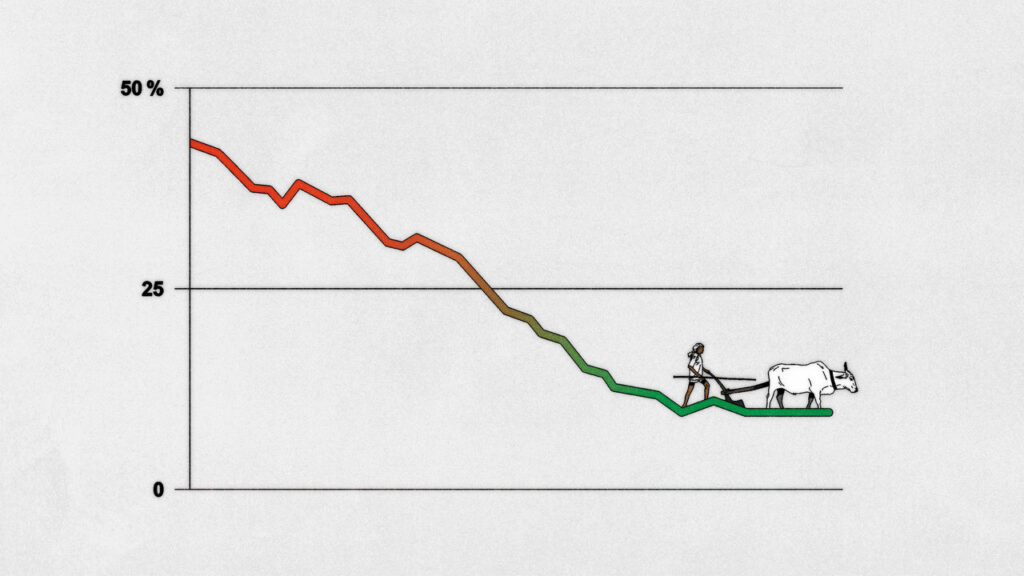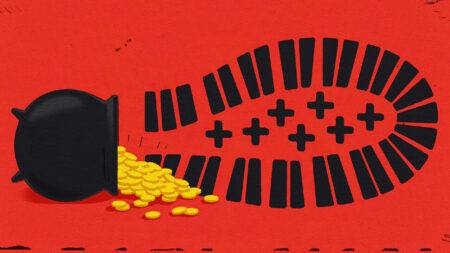Thirty years ago, Siddharth Dube, an insightful writer and researcher, embarked on a journey to a remote village in northern India, a region steeped in history and marked by a significant peasants’ revolt. During his visit, Dube encountered many aspects of village life that were deeply troubling and, in many ways, reflective of the stark socio-economic inequalities in rural India. The landscape was characterized by mud huts that stood as a testament to the enduring poverty of the villagers, while primitive ploughs and rudimentary farming tools illustrated the outdated agricultural practices that limited their productivity.
Moreover, the emotional weight of his observations came through vividly as he noted the presence of “barefoot old men” who bore the visible marks of hardship carved into their weathered faces. Likewise, he observed “bone-thin children”, who seemed perpetually hungry and lived in conditions that were hardly conducive to healthy growth and development. These stark realizations underscored the relentless cycle of poverty that ensnared the villagers, illustrating a dire need for systemic change and far-reaching social reforms.
One poignant figure from Dube’s narrative was an elder villager named Ram Dass, whose life story encapsulated the broader struggles faced by the community. Ram Dass recounted the profound deprivation of his youth, a time when he had to toil under grueling conditions on someone else’s land for meagre compensation – merely 1.5 kilograms of grain for a long day’s work. His memories painted a grim picture of the relentless grind of agricultural labor, where even the smallest rewards were insufficient to meet basic needs.
Dube was struck by the heart-wrenching ingenuity with which the villagers had to adapt to their harsh realities. On frigid nights, they would stuff rice stalks into their tattered old garments, seeking a modicum of warmth from the biting cold. This spoke volumes about the lengths to which individuals would go to survive in an environment that offered little security or comfort. Ram Dass’ bittersweet recollection—that many villagers had never even known what a quilt was—served as a poignant reminder of the dismal living conditions that rendered simple comforts virtually unattainable.
The narrative took an even darker turn as Dube and Ram Dass discussed the harsh realities of personal possessions within the community. A man was considered exceptionally fortunate if he owned a single pair of shoes, a pair that would accompany him from the day of his wedding until the end of his life. Such reflections revealed not only the dire economic circumstances but also the cultural implications of wealth acquisition and ownership in rural Indian society. The children’s futures appeared bleak, with little opportunity for advancement or change, entrenching the community in a cycle of poverty that would be passed down through generations.
Siddharth Dube’s exploration of this village not only illuminated the harsh conditions faced by its residents but also invited a broader reflection on justice, equity, and human dignity in the context of rural India. He presented a vivid tableau of human endurance against overwhelming adversity, while simultaneously calling attention to the systemic failures that perpetuate poverty. Through his encounter with Ram Dass and the villagers, readers are left with an unsettling understanding of the complexities surrounding rural life, socioeconomic disparity, and the urgent need for equitable policies that can transform lives for the better.
In conclusion, Siddharth Dube’s reflective account serves as a powerful lens through which we can examine the persistent challenges faced by rural communities in India. The contrast between the villagers’ harsh realities and the more privileged lives of those in urban centers highlights the deep-rooted structural issues that require concerted efforts for resolution. His poignant observations of human suffering and resilience remain relevant today, reminding us that the quest for social justice and economic equity is a continuing struggle that demands our attention and action.









